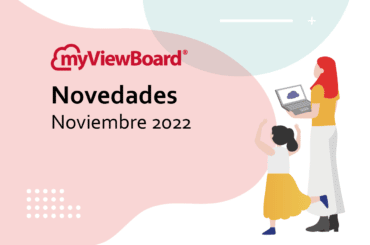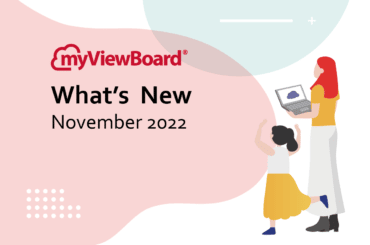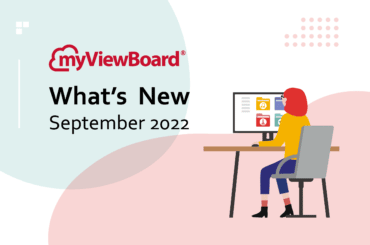This post is also available in: Español (Spanish) 繁體中文 (Chinese (Traditional)) Français (French)
The concept of hybrid learning is still relatively new and teachers are still very much in the process of getting to grips with it – which is why tips for hybrid teaching can be so useful. In particular, teachers embracing this approach need to understand how they can make the most of EdTech to boost student engagement and how to communicate with students who are learning in very different ways.
Read on for further information, including four tips that can help you with hybrid teaching.
Education technology has opened up the possibility of hybrid teaching, which is where in-person and remote learners are able to be taught at the same time, but many teachers could benefit from some tips for hybrid teaching. After all, it is a relatively new approach and one which does require some strategic adaptation.
In this article, we take a closer look at four steps you can take to improve the quality of teaching in a hybrid setup.
Give Both Groups Equal Attention
When you are teaching in a classroom with students who are physically present in the same room as you, there may be a natural tendency to prioritize those students. However, for hybrid teaching to be effective, it is important that you make a conscious effort to avoid falling into this trap and that you try to give equal attention to both groups.
During the outbreak of the coronavirus pandemic, one of the key challenges that emerged was related to the sudden switch to remote teaching. According to survey data compiled by Chalkbeat, teachers estimated that only around 60 percent of students were regularly participating or engaged with distance learning and more than two-thirds of teachers felt their students were less engaged during remote instruction. This helps to highlight the potential engagement issue.
Of course, part of the problem with the coronavirus outbreak was that teachers were suddenly forced into providing remote teaching at short notice, whereas with a hybrid learning course that has been carefully designed to provide accessibility from home, some of the problems are avoidable. However, it is still important that teachers monitor remote learners, give them adequate attention during lessons, and make an effort to include them in active learning activities.

Make Use of Digital Whiteboarding
Another of the main tips for hybrid teaching is to make intelligent use of EdTech in order to bring both the in-person and remote learners closer together, enabling them to enjoy some level of shared experience beyond listening to the lesson itself. One of the best ways to do this is through the use of digital whiteboarding solutions.
ViewSonic offers a solution in this area, myViewBoard Classroom, which is specifically designed to facilitate hybrid teaching. Using this technology, teachers can easily switch between the in-person and online teaching components. All students need to connect to the solution is a working internet connection and a web browser.
This technology also allows for screen sharing across devices, including digital whiteboards. As a result, the class can easily be brought together by sharing ideas and adding information to the board. This can then be seen by all students, regardless of whether they are learning in the classroom, or remotely from their own home.

Accept Some Level of Adjustment
As we explained in a previous article, one of the potential downsides of synchronous distance learning is the complete reliance on technology, to the point where both teaching and learning can be heavily disrupted by things like bandwidth issues, lost internet connections, and power cuts. This same problem applies to those who use hybrid learning to attend classes remotely because they are relying on technology to connect with the class.
In addition, hybrid learning gives students a flexibility they are often not used to and requires them to interact with one another in new ways as well, such as through online chat or video conferencing.
With this in mind, one of the biggest tips for hybrid teaching is to stay patient and to accept that some level of adjustment is going to be necessary. If early lessons feel a little chaotic, or if you find that lessons become disrupted by technology issues, you should, by all means, do your best to resolve these problems, but you will also find that things do become easier over time, as students get used to the new way of learning and as technology issues get fixed.
In terms of solving some of the technical issues, one useful tip is to try to ask remote learners to connect with the class slightly early, if at all possible. This then gives you a little bit of time before the lesson begins to identify anyone who is experiencing problems and to try to resolve them without disrupting the rest of the class.

Encourage Collaborative Learning
Hybrid learning has the potential to open up access to education to a wider group of people and can even do so without you having to increase the size of a physical classroom you use. Some students will simply prefer to learn remotely, whether it is due to the convenience, due to their physical distance from the classroom, or their learning style.
As you get to know your class, there is a good chance that you will have a number of students who almost exclusively rely on the remote learning component of hybrid learning and there is no fundamental problem with this. However, one of the findings from a study entitled Retention in Online Courses, published in SAGE Journals, was that student retention can be significantly boosted through collaborative problem-solving tasks and group work.
With this in mind, you should make sure that your lessons regularly include collaborative tasks, which require group thinking. When possible, you should also try to mix up the different groups within your class, so that they are made up of a combination of remote and in-person learners, as this will help to make remote learners feel more included.
Final Thoughts
Hybrid teaching is still a relatively new concept and so evidence on the best methods and strategies to use is still emerging too. However, making a conscious effort to keep remote learners engaged with the material, facilitating collaboration among the entire class, and using digital whiteboarding to create a shared experience can all be beneficial. On top of this, it is also vital to be patient and to accept that everyone will need time to adjust.




